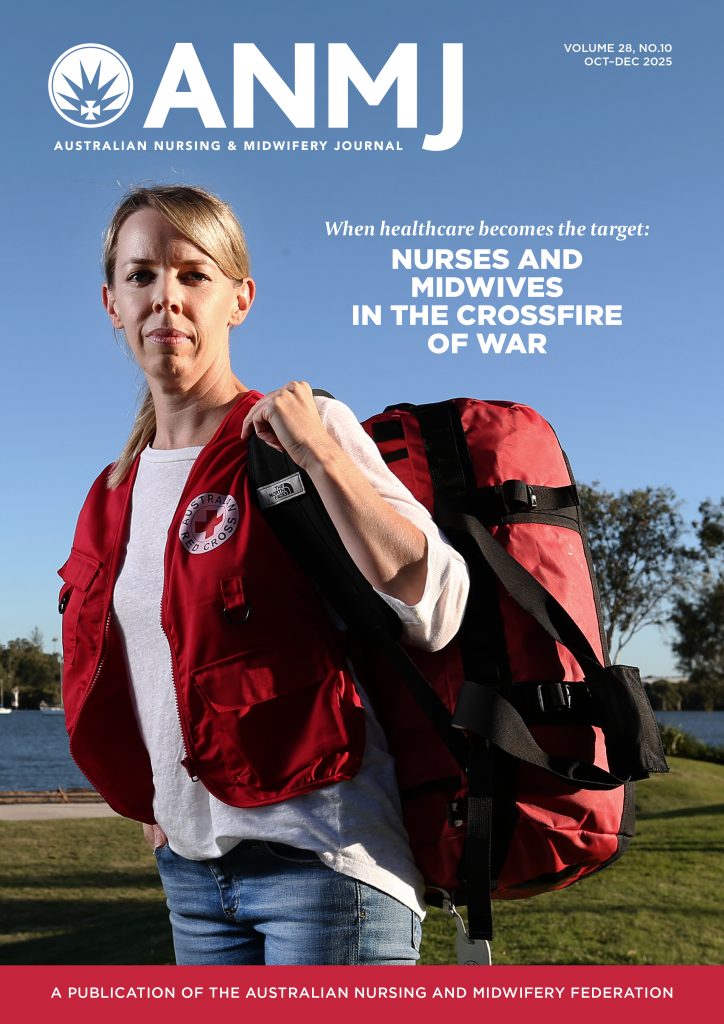Registered nurses supporting students on clinical placement believe providing them with quality learning opportunities adds to their already heavy daily workload and that they deserve to be recognised, particularly by management, for the extra time and effort the teaching role demands, according to a new study.
Led by Dr Carina Anderson, a Lecturer in the School of Nursing, Midwifery and Social Sciences at CQUniversity, the study, Recognition for registered nurses supporting students on clinical placement: a grounded theory study, interviewed 15 RNs from across Queensland about their perspectives of looking after and teaching nursing students on clinical placements.
In Australia, undergraduate nursing students are required to undertake at least 800 hours of clinical placement as part of their three-year Bachelor’s degree. Facilities charge universities upwards of $50 per day to take on a student.
Dr Anderson says anecdotal observations of inconsistency when it comes to the support offered by RNs to nursing students on clinical placement sparked the study.
Published in the June-August 2020 issue of the Australian Journal of Advanced Nursing (AJAN), the study outlines that RNs licenced to practice in Australia are bound by law to practice according to the Nursing and Midwifery Board of Australia’s (NMBA) professional codes and guidelines, with the NMBA code of conduct for nurses stating RNs must commit to teaching, supervising and assessing students, and that it is the responsibility of all nurses to create opportunities for nursing students.
“One of my roles at the university was organising clinical placements for nursing students and I used to support them [the students] and the facilitators on their placements via phone,” Dr Anderson explains.
“I was surprised at how a lot of students didn’t seem to feel supported when they were on their placements. It got me thinking, why don’t RNs know that our nursing standards actually state that we have to support nursing students when they come onto clinical placements? It felt important to know why our students don’t feel supported.”
RNs interviewed as part of the study had previously worked alongside nursing students as clinical RNs, nursing managers and clinical educators.
The major finding from the study revealed RNs believe being supportive of nursing students and providing them with learning opportunities is an ‘added extra’ to their already busy working day, with the view linked to three emerging themes – time, workload and wanting recognition.
Nevertheless, RNs felt being supportive of nursing students and providing them with learning opportunities was still “the right thing to do”.
One of the emerging themes, time, found it takes RNs extra time in their day to support students, mostly because budding nurses take longer to complete clinical tasks and practice basic nursing skills, such as how to administer medications.
“I mean you might be able to do something fairly quickly but the poor old student when they’re learning, they’re learning. So it will take twice, three times as long….And if your time constraints are really limited that makes it hard,” one participant said.
Being supportive of nursing students on clinical placement could take up to two hours out of an RNs day, another participant revealed.
“Unfortunately though I think it comes back to staffing sometimes and the availability of staff. They just don’t have the two hours to give you to spend with the student, just to take that extra time out to explain why something’s done this way, or even if it’s to debrief with them something that happened on the ward that they’ve had trouble grasping or it’s been traumatic for them or whatever.”
Because teaching nursing students on clinical placement takes up an RNs time, RNs should be afforded extra time by having their patient workloads decreased if they are allocated students, participants said.
One participant said providing students with learning opportunities intensified already heavy workloads and often triggered heightened stress.
“You don’t have that time to stand back which is probably where my anxiety comes from wanting to do it for them and wanting them to make that connection a lot faster…You know instead of being able to stand back and let – just watch it. I want to do it for them because I still know that I’ve still got X, Y, and Z to do and this is only T.”
Despite workload concerns, participants said they were still “happy to have nursing students” and believed in nurturing the next generation of nurses.
“As nurses, it’s ingrained that we would do the right thing, it is part of our very moral fibre,” Dr Anderson explains.
“They [RNs] want to do the right thing but at the same time they believe having students is an added extra to their workload, and I agree it is.”
Tellingly, participants revealed they wanted recognition for the extra time and effort it takes to support students with learning opportunities.
But RNs did not want gifts or money, but rather said they would be happy with a certificate, or even just a pen or notepad, to recognise their contribution to student learning.
Dr Anderson acknowledges it was surprising that many RNs who participated in the study didn’t fully understand their requirements under current nursing standards to look after and teach students on clinical placements and that they, in fact, wanted recognition for their extra workload.
She suggests the belief could trace back to the 1980s and the shift from hospital training to tertiary education, which she argues potentially created a loss of connection among staff and students.
“Back then, students used to belong to the actual facility where they were doing their nursing training, so when education moved into the tertiary sector that sense of belonging was lost and that’s where the RNs start to think ‘Hang on the student doesn’t belong to me, I don’t have to look after them, it’s more the university’s responsibility’.”
Dr Anderson says the study showed staffing levels and a lack of time is preventing RNs from supporting and teaching nursing students adequately.
“It’s so important. We’re talking about such an important role for an RN, to teach that student because we’re teaching the future RNs and if we don’t get it right, we’re messing with people’s lives.”
Crucially, the study recommends that RNs be acknowledged for the time and effort they dedicate to student learning, that nursing management should decrease an RNs patient workload when they are looking after nursing students, and increasing ratios of RNs in the workplace to ensure they have the extra time to support students, which will, in turn, increase patient safety and improve outcomes.
“If students are missing out on those important opportunities when they are having their clinical experience then when it comes to actual practise there’s a risk of them not being competent at a certain skill or task and then that puts patients at risk,” Dr Anderson argues.
“That’s why it’s really important that we take this seriously and make sure that RNs are given extra time or have their workload reduced to give them the time to teach the students to be competent RNs.”
Dr Anderson says workloads need to be reduced and that management needs to lead the way to ensure proper learning is taking place.
She says literature shows management are often aware of the issue but do not follow through on pledges to reduce workloads.
“When an RN has a student their workload should be decreased so that they can allow that time for teaching. For example, if they’re allocated four patients in the shift and they’ve got a student then perhaps they need to have that decreased to three patients so that they’ve got the time to actually teach that student effectively.
“There’s going to be opposition [from management] because of the financial implications but we’ve got to look at the end result, which is that we are going to have competent nurses that are safe to practice when they graduate and without effective teaching and support and supervision, there’s a big risk that they’re not going to be coming out as competent RNs when they graduate.”
In concluding, Dr Anderson says the study now paves the way for greater learning and understanding among nurses of their obligations when supporting nursing students on clinical placement, and equally, the need for management to adjust the workloads of RNs to allow them to dedicate crucial time to student learning.
“There are two messages. The first one is obviously that registered nurses need to be aware that they do need to look after the students when they’re on placement and be supportive of them and teach them. The second and probably the most important one is management needs to look at RNs’ workloads when they have nursing students so that the RNs can have the time to teach the students effectively.”
To read the full study click here









One Response
Every article read means a lot and and inspires me as nurse
Thank you for sending me the information
Sheryl Wala